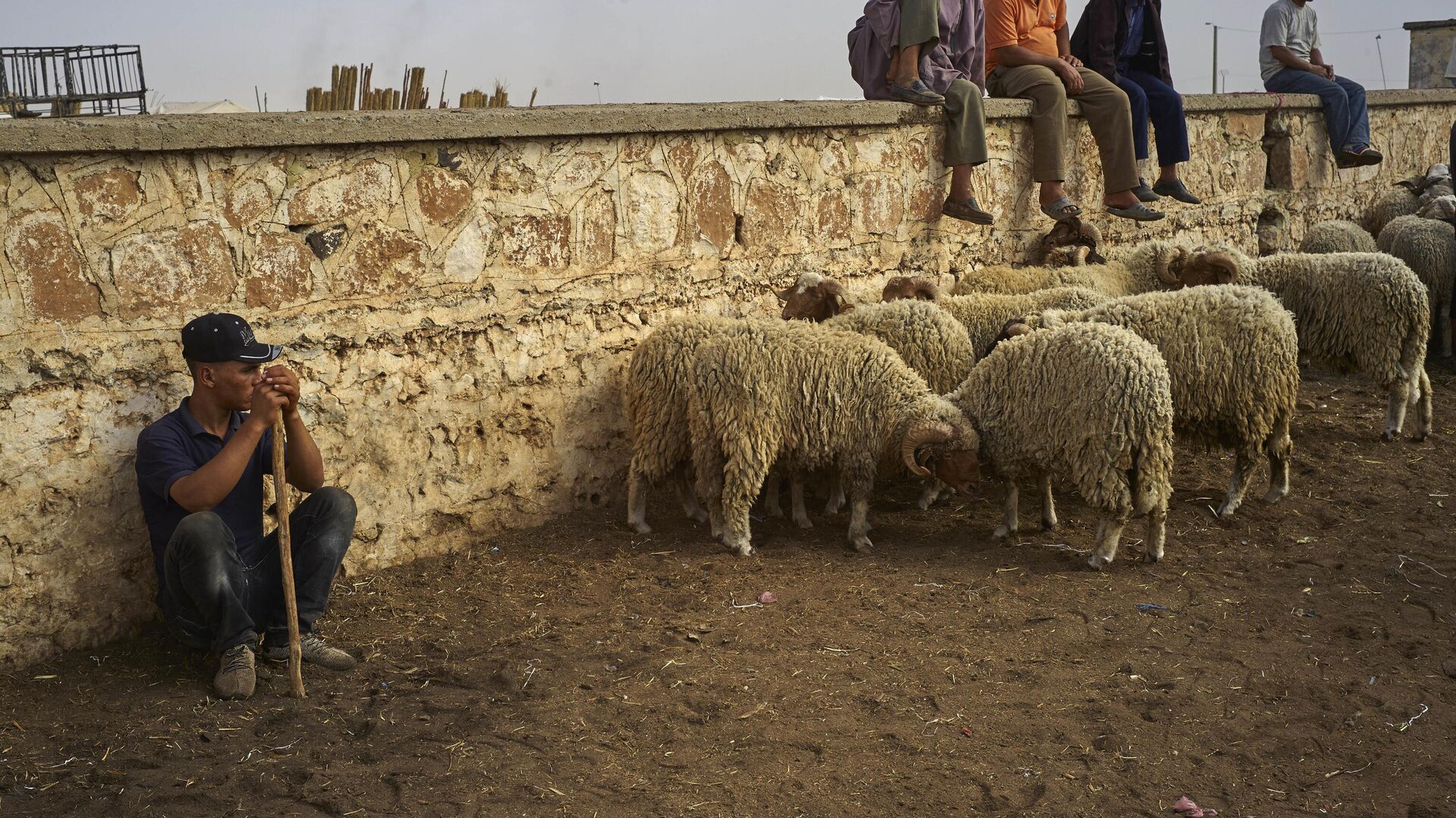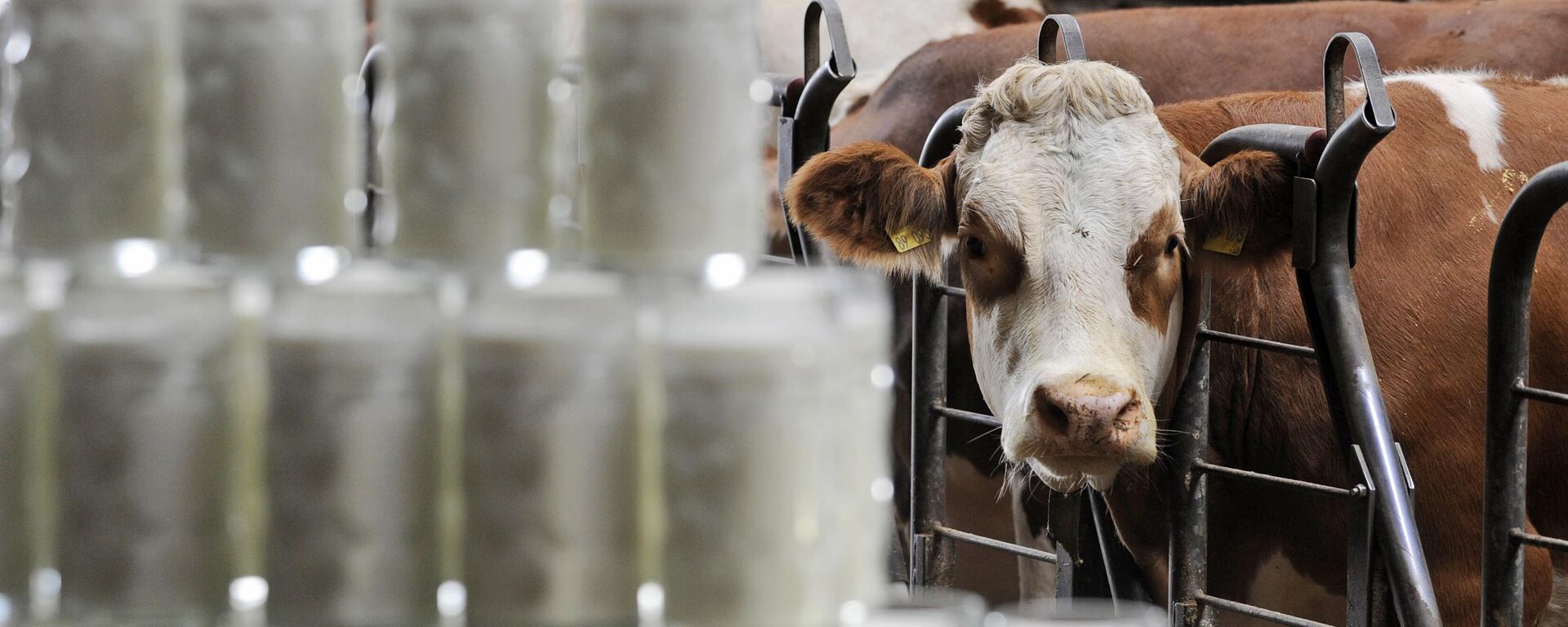https://en.sputniknews.africa/20250214/morocco-reportedly-faces-severe-livestock-decline-amid-prolonged-drought-1070652165.html
Morocco Reportedly Faces Severe Livestock Decline Amid Prolonged Drought
Morocco Reportedly Faces Severe Livestock Decline Amid Prolonged Drought
Sputnik Africa
Last year’s drought slashed Morocco’s wheat and barley production to 3.1 million tonnes—a 43% decline from the previous year—raising concerns about future food... 14.02.2025, Sputnik Africa
2025-02-14T15:12+0100
2025-02-14T15:12+0100
2025-02-14T15:12+0100
morocco
north africa
food
food security
cattle
wheat
economy
drought
water security
crops
https://cdn1.img.sputniknews.africa/img/07e9/02/0e/1070652264_0:243:3065:1967_1920x0_80_0_0_813626c869c00d6efe5ed8aef99c74fb.jpg
Morocco’s livestock sector is facing a sharp decline, with cattle and sheep herds decreasing by 38% over the past nine years due to consecutive droughts, media reported, citing Agriculture Minister Ahmed El Bouari.The country has endured six years of prolonged drought, depleting its water reservoirs, leading to mass job losses in the farming sector, and accelerating efforts to expand desalination projects. Rainfall this year was 53% lower than the average recorded over the last three decades, further straining agricultural output.With little pasture available for livestock, meat production has plummeted, prompting Morocco to increase imports of cattle and red meat to stabilize the domestic market. In response, the government suspended import duties and value-added tax on cattle, sheep, camels, and red meat in its 2025 budget.So far in 2025, Morocco has imported 124,000 sheep, 21,000 cattle, and 704 tonnes of red meat, according to the minister.Water scarcity has significantly impacted key agricultural regions. Irrigation dams in Doukala and Souss-Massa are at critically low levels, holding just 2% and 15% of their capacity, respectively. Nationally, dam reserves have dropped to 26%, with priority given to supplying drinking water to urban areas over agricultural needs.Despite these challenges, Morocco has slightly increased the area planted with staple crops such as soft wheat, durum, and barley, reaching 2.6 million hectares compared to 2.4 million last year. However, El Bouari reportedly noted that wheat output remains highly dependent on rainfall levels through the end of March.
https://en.sputniknews.africa/20250124/zimbabwes-raw-milk-production-jumps-149-in-2024-hitting-record-1147-million-liters-1070340170.html
morocco
north africa
Sputnik Africa
feedback@sputniknews.com
+74956456601
MIA „Rossiya Segodnya“
2025
Christina Glazkova
https://cdn1.img.sputniknews.africa/img/07e7/0b/07/1063380906_0:0:673:674_100x100_80_0_0_79628b4d0cd9f29291a57aa13bbf9e7a.jpg
Christina Glazkova
https://cdn1.img.sputniknews.africa/img/07e7/0b/07/1063380906_0:0:673:674_100x100_80_0_0_79628b4d0cd9f29291a57aa13bbf9e7a.jpg
News
en_EN
Sputnik Africa
feedback@sputniknews.com
+74956456601
MIA „Rossiya Segodnya“
Sputnik Africa
feedback@sputniknews.com
+74956456601
MIA „Rossiya Segodnya“
Christina Glazkova
https://cdn1.img.sputniknews.africa/img/07e7/0b/07/1063380906_0:0:673:674_100x100_80_0_0_79628b4d0cd9f29291a57aa13bbf9e7a.jpg
morocco, north africa, food, food security , cattle, wheat, economy, drought, water security, crops, agriculture
morocco, north africa, food, food security , cattle, wheat, economy, drought, water security, crops, agriculture
Morocco Reportedly Faces Severe Livestock Decline Amid Prolonged Drought
Christina Glazkova
Writer / Editor
Last year’s drought slashed Morocco’s wheat and barley production to 3.1 million tonnes—a 43% decline from the previous year—raising concerns about future food security and economic stability in the region.
Morocco’s livestock sector is facing a sharp decline, with cattle and sheep herds decreasing by 38% over the past nine years due to consecutive droughts, media reported, citing Agriculture Minister Ahmed El Bouari.
The country has endured six years of prolonged
drought, depleting its water reservoirs, leading to mass job losses in the farming sector, and accelerating efforts to expand desalination projects. Rainfall this year was 53% lower than the average recorded over the last three decades, further straining agricultural output.
With little pasture available for livestock,
meat production has plummeted, prompting Morocco to increase imports of cattle and red meat to stabilize the domestic market. In response, the government suspended import duties and value-added tax on cattle, sheep, camels, and red meat in its 2025 budget.
So far in 2025, Morocco has imported 124,000 sheep, 21,000 cattle, and 704 tonnes of red meat, according to the minister.
Water scarcity has significantly impacted key agricultural regions. Irrigation dams in Doukala and Souss-Massa are at critically low levels, holding just 2% and 15% of their capacity, respectively. Nationally, dam reserves have dropped to 26%, with priority given to supplying
drinking water to urban areas over agricultural needs.
Despite these challenges, Morocco has slightly increased the area planted with staple crops such as soft wheat, durum, and barley, reaching 2.6 million hectares compared to 2.4 million last year. However, El Bouari reportedly noted that wheat output remains highly dependent on rainfall levels through the end of March.



